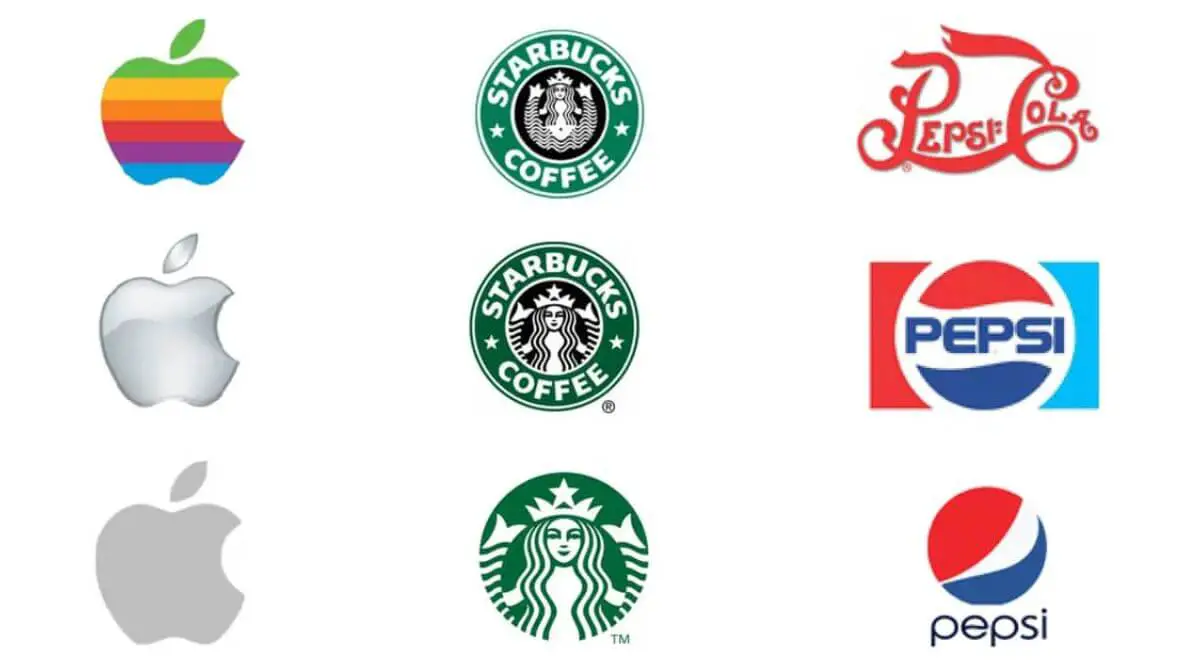Welcome, dear readers, to the fascinating world of corporate branding, where logos, slogans, and brand identities undergo transformations that can sometimes leave us all baffled. In this blog, we’ll delve into the reasons behind rebranding and how they can make or break a company.
Changing Tides in the Beverage Industry
Let’s start by taking a look at the beverage sector, where rebranding has been causing quite a fizz. Pepsi, for instance, spent over a million dollars in 2009 to unveil a bizarre smiley emoji-like logo, only to revert to their original design in 2023, costing them millions more. But why do companies like Pepsi do this?
The Power of Rebranding
Your brand is your most valuable intangible asset, and it’s essential to keep it fresh and relevant in today’s fast-paced market. Companies rebrand for a myriad of reasons, and here are some of the most common ones:

Escaping a Troubled Past: Burberry’s Transformation
Remember when Burberry was synonymous with classic trench coats and iconic plaid patterns? In the late ’90s and early 2000s, the brand faced challenges. Its iconic pattern had been counterfeited and associated with gang attire, tarnishing its luxury image. In 2006, under new leadership, Burberry underwent a significant rebranding effort. They minimized the use of their famous plaid and embraced a modern aesthetic. This move, combined with a focus on digital marketing, helped them regain their luxury status.
Bouncing Back from a Crisis: BP to Beyond Petroleum
Companies often rebrand to recover from a crisis or negative reputation. After the Deepwater Horizon oil spill in 2010, BP rebranded to “Beyond Petroleum” to emphasize its shift toward renewable energy and regain public trust.
Reflecting Structural Changes: Google to Alphabet
Rebranding can also signal structural realignment or corporate change. Google, for example, restructured under the umbrella brand “Alphabet,” while Facebook transformed into “Meta” to align with its new vision of the Metaverse.
Staying Relevant: Dunkin’ Donuts to Dunkin’
Remaining relevant in a changing market is another driver for rebranding. In 2018, Dunkin’ Donuts simplified its name to “Dunkin'” to emphasize its focus on coffee and other non-doughnut products.
Facing Competition: Burger King’s Revamp
Competition can force companies to rethink their branding. Burger King, trailing behind McDonald’s, initiated a rebranding effort to differentiate itself. They revamped their slogan and logo to create a brighter and more professional image.
Leadership Changes: Apple’s Transformation
New leadership can bring about substantial changes. When Steve Jobs returned to Apple in 1997, he oversaw a transformation, replacing the iconic rainbow logo with a sleek silver apple, symbolizing a new era for the company.
Attracting a New Audience: KFC’s Rebrand
Companies may rebrand to appeal to a younger demographic. KFC, for instance, distanced itself from unhealthy connotations to attract a broader customer base.
Simplification: Abbreviating Names
In the spirit of simplification, many companies shorten their names. Starbucks Coffee became “Starbucks,” Hewlett-Packard became “HP,” and Price Waterhouse Coopers became “PwC.”
Digital Adaptation: Volkswagen’s Logo Update
The digital wave has prompted many brands to simplify their logos for better visibility on screens of all sizes. Volkswagen, for example, revamped its logo for the digital age.
Aligning with a New Vision: Meta’s Emergence
Lastly, companies rebrand to align with new corporate strategies or visions. Facebook’s transformation into “Meta” reflects its focus on the Metaverse, a new direction for the company.
In conclusion, ever-evolving world of business, rebranding is a powerful tool that can breathe new life into a company or lead it in exciting new directions. However, not all rebrands are successful, and some companies may need to course-correct when their brand transformations miss the mark. Whether driven by competition, change in leadership, or the need to stay relevant, rebranding is a reflection of the dynamic nature of the business world. Stay tuned for more insights into the world of branding and rebranding!
Frequently Asked Questions FAQs
Why do companies choose to rebrand?
Companies rebrand to stay relevant, adapt to changing markets, and convey a new vision or identity.
What are common triggers for a rebrand?
Common triggers include mergers, negative reputation, shifting demographics, and changes in leadership or business focus.
How can rebranding impact a company’s success?
Rebranding can rejuvenate a company, attract new audiences, revitalize reputation, and align with modern values.
What are the risks associated with rebranding?
Risks include alienating existing customers, confusion, and the potential for the new brand not resonating as intended
Related Article









